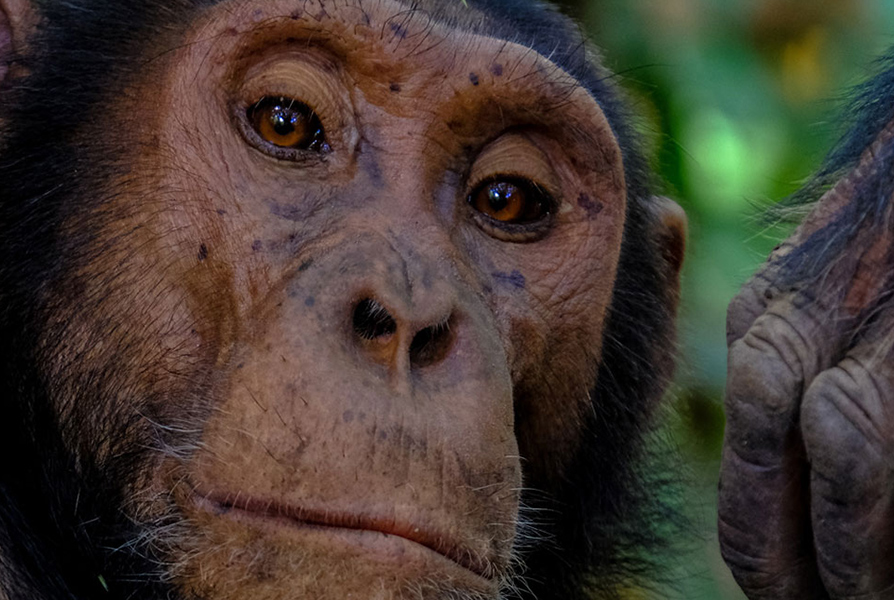Murchison Falls Chimpanzee Tracking
Budongo Forest is the major base for tracking Chimpanzees in Murchison Falls National Park. It covers an area of 825 square kilometers within the MFCA. Chimpanzee tracking in the forest is handled at the Kaniyo Pabidi and Busingiro eco tourism sites under the Jane Goodall Institute. Other forests within the conservation area for Murchison Falls Chimpanzee tracking are Kaniyo Pabidi and Rabongo forests
It would be a cold early morning or late afternoon (depending on the visitor’s preference) for travelers embarking on a Uganda safari Murchison falls National Park to track Chimpanzees in the wild. There are about 76 mammal species within the park and out of these; over 600 chimps exist within the riparian forests and woodland of Budongo, kaniyo Pabidi and Rabongo.
When to go
The morning Murchison Falls chimpanzee tracking adventures are perfect for catching the primates off guard, leaving their nests for the day to gather fruit and go about their day to day activities. Trackers, in a group of eight individuals per shift, would first attend a briefing about how they ought to behave in the presence of the Chimpanzees and what regulations they ought to observe.
Led by a UWA guide, the group emerges from the tourism center making their way through enormous Mahogany and iron wood trees until they come to where the chimps have been holding up for the previous night. Budongo forest along with Kaniyo Pabidi and Rabongo form the world’s largest collection of East African Mahogany. You might even see a large Mahogany 20m wide and 80m tall in Budongo.
What to expect
Once you have come within close proximity with the Chimpanzees, you will be required to remain vigilant as these lively primates tend to swing from tree to tree and might be gone before you take your picture. Camera lenses are always turned off and sudden movements are ill advised. After your Murchison Falls Chimpanzee tracking, you can head back to the tourism center to close the day.
A Uganda safari Murchison Falls National Park to track Chimpanzees in the wild is best done from the months of October to January where the rains are light and the fruits in the forest are ripe and we know where there are ripe fruits, there will be Chimpanzees. A Chimpanzee tracking permit costs USD $85 and it comes with bonus bird watching and nature walk safaris.
Owing to the fact that the park has 76 mammal species and there are about 24 species in Budongo alone, you should definitely expect to see a variety of animals when Murchison Falls Chimpanzee tracking, apart from just the Chimpanzees. You might come across animals like Olive Baboons, White and black Colobus monkeys, red tailed monkeys and blue monkeys among others.
The forests also provide memorable birding opportunities with sightings of rare birds like Puvel’s Illadopsis that you will not see anywhere else in Uganda. Other birds include; Crested Guinea fowl, Chocolate backed kingfisher, Crowned Eagle, African Pied wagtail, White thighed hornbill, Black Kite, Fork tailed drongo and Olive breasted greenbul among many other birds.
Chimpanzee habituation
Chimpanzee habituation on the other hand is less common and irregular for Uganda safari Murchison Falls National Park. The activity is undertaken during the low seasons for safari and permit costs are often higher than those for Chimpanzee tracking. Chimpanzee habituation is mainly about spending a day with the chimps from when they leave their nests in the morning to when they retire for the night.
It is imperative to take heed of the rules governing Murchison Falls Chimpanzee tracking such as; trackers should be 15 years and older hence all persons below the age limit will be prohibited from attending the experience. In fact, where suspicion arises you might be required to present birth verification details to prove that the teenager is 15 years and older.
Also, only eight people per session are issued permits thus making it a total of 16 people per day therefore; you would need to book for your permit prior to your safari to avoid any inconveniences and disappointments. In addition, permit prices change whereby they are higher during peak seasons and lower during low seasons. Low season permits might even come with bonuses and discounts.

